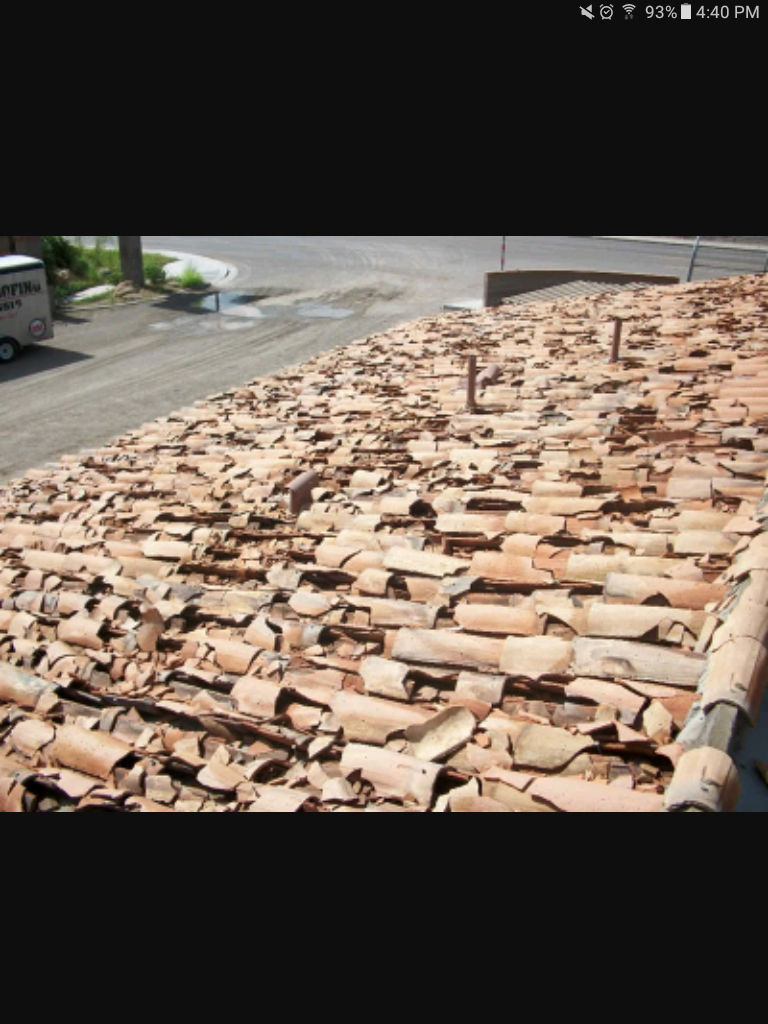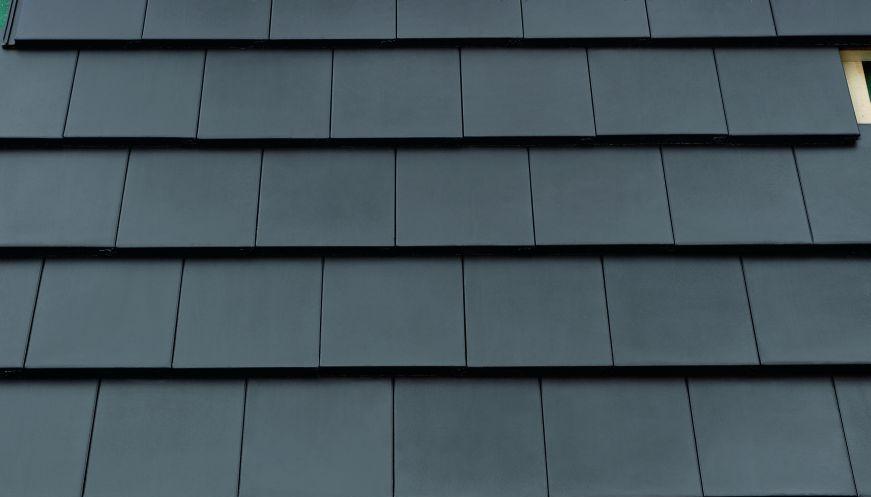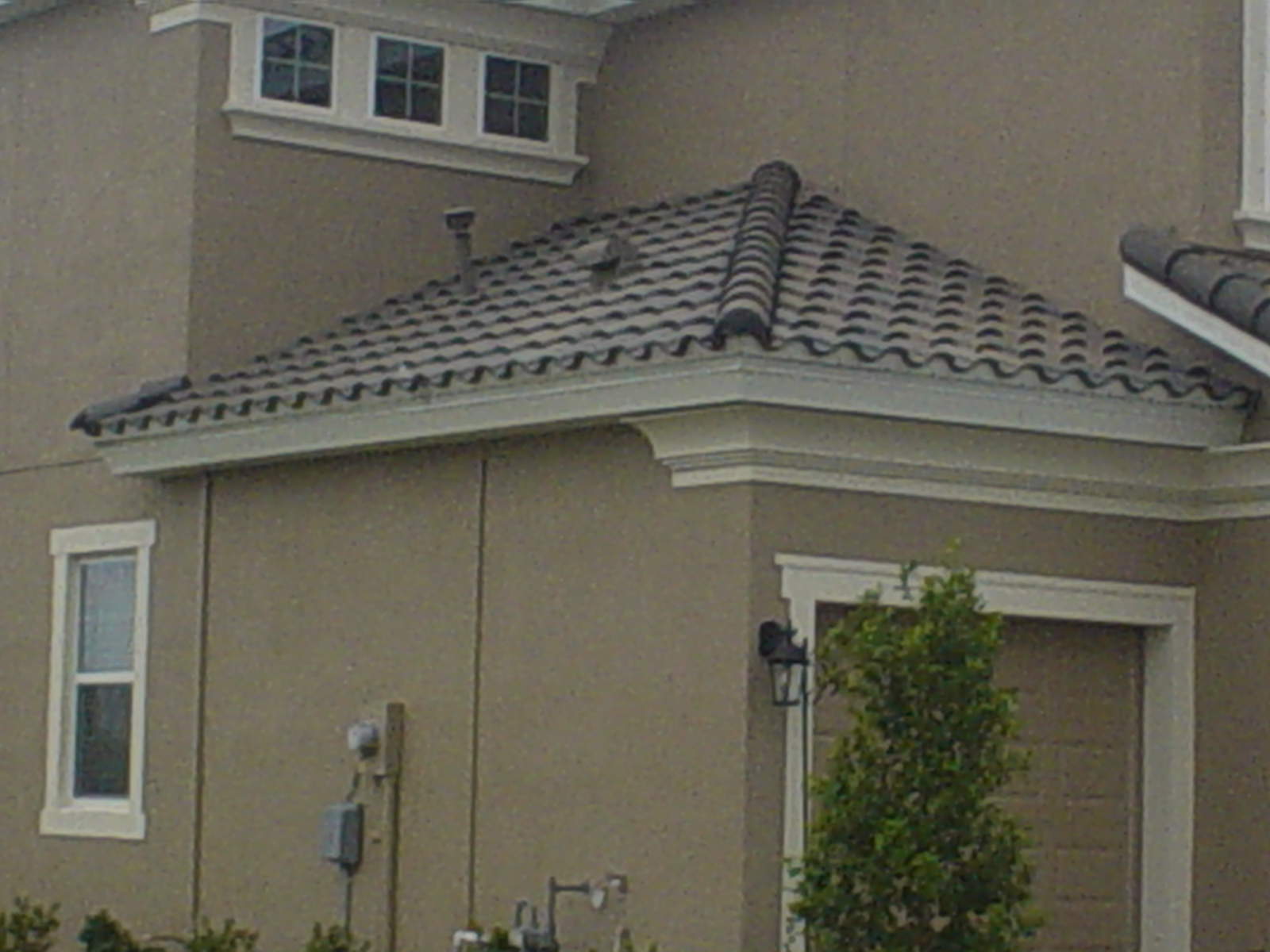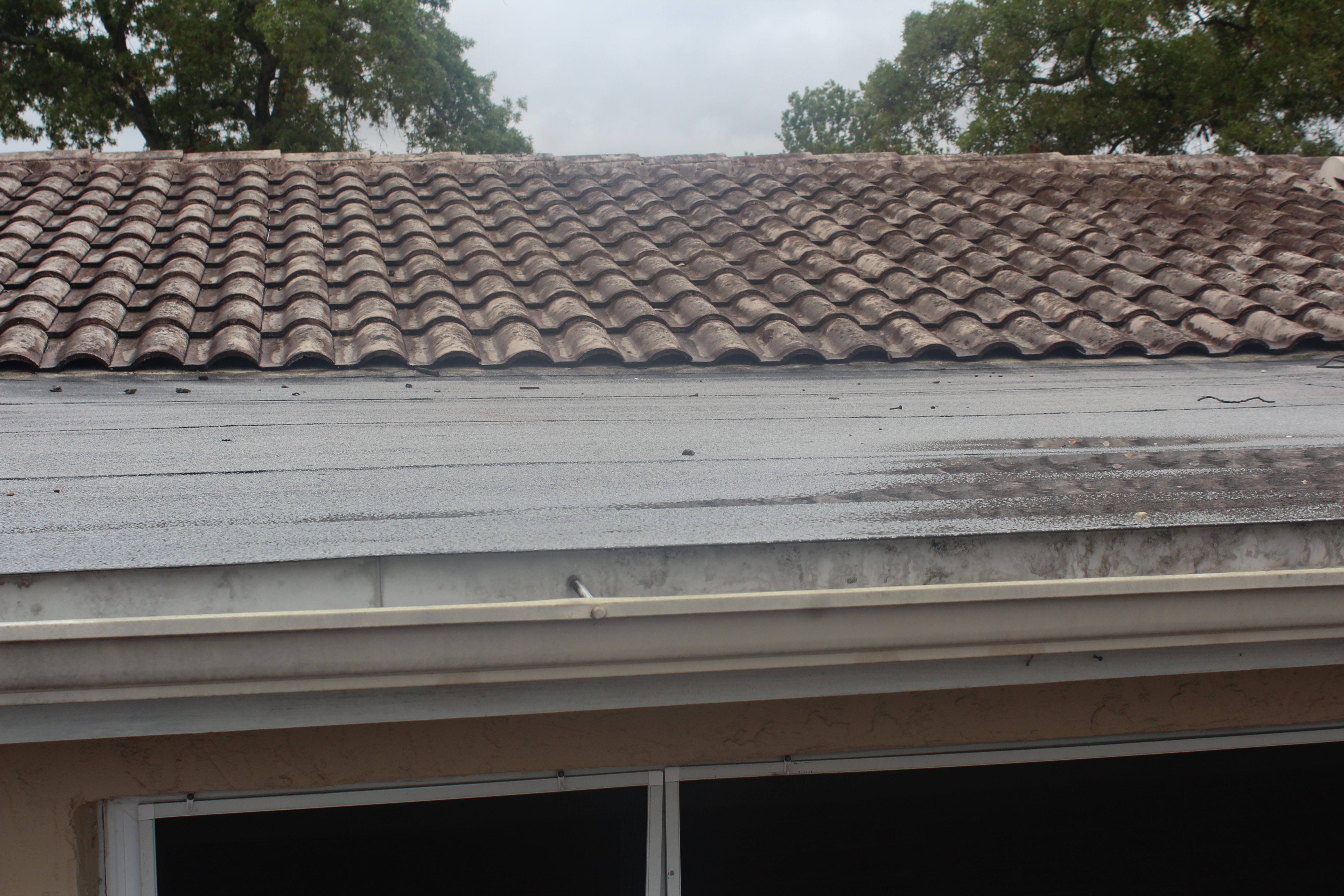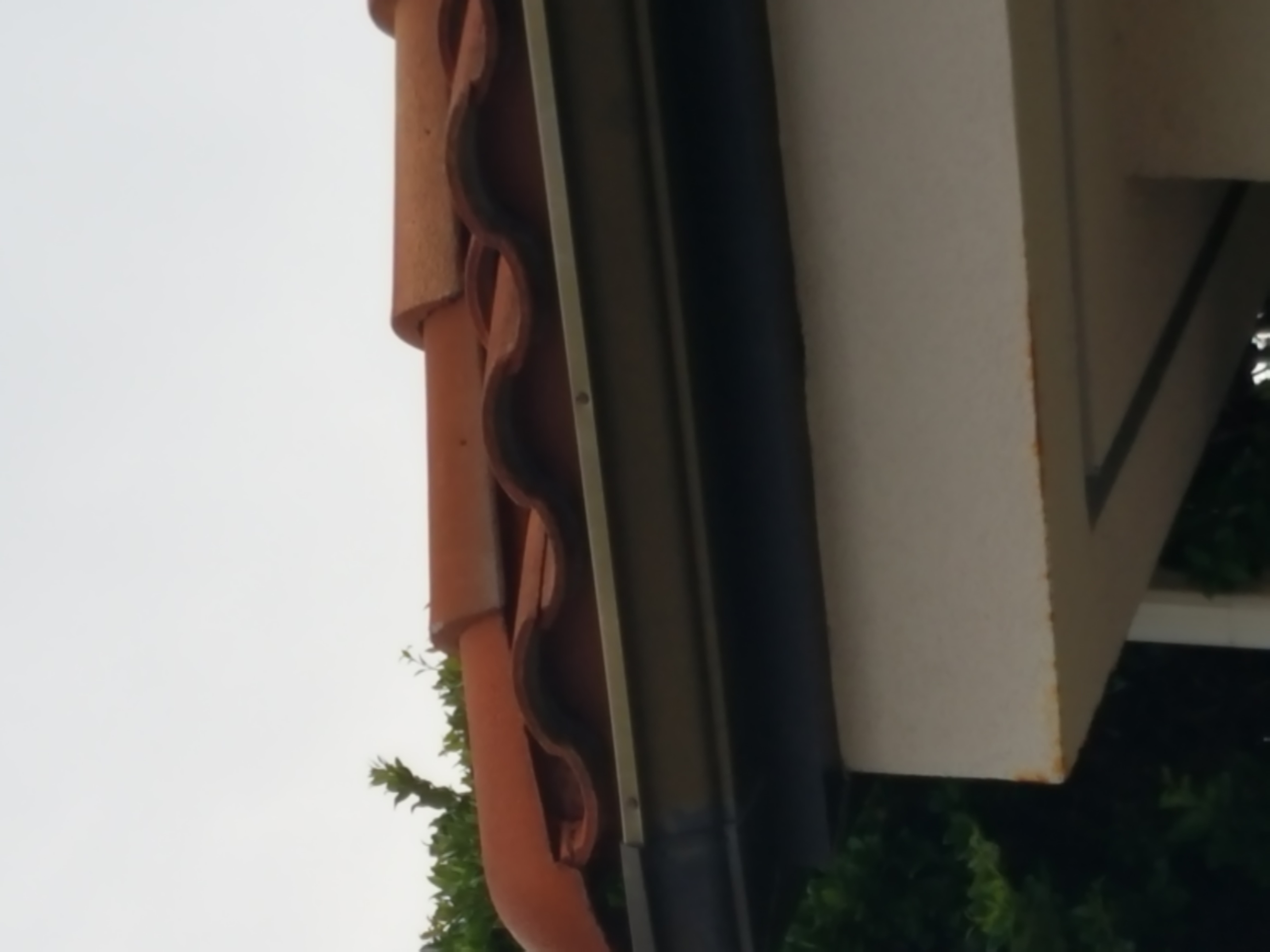Drip leg in gas fired water heaters are used to prevent any debris or particle from coming unto the appliance. It should have a ball valve installed in the gas line before the t fitting separates the water heater from the drip leg so the gas can be completely shot down in order to collect said debris from the drip leg.
Here you can see the concrete tile has broken and exposed the underlayment. This was on the second story of the home and there were no indications of a leak in the attic. Although we don’t get much rain in Southern California, I still advised the clients it was only a matter of time before a leak developed and that this tile should be replaced by a liscensed roofing contractor.

Arc-Fault Circuit Interrupters (AFCIs): Like most inspectors, I come across these AFCI’s many times during the week. 9 out of 10 time when tested it seems like they fail when tested. After I note the failed AFCI’s as a defect in my report, I educate my clients on the importance of these devices, how they work and how they should be tested. Most clients are unaware of these devices and think I’m talking about a GFCI, thats why I feel it’s important to educate them on these devices.
This is a picture of hail damage on a clay tile roof. This roof should be replaced. However, because it is a clay tile roof it can wait up to a year before being replaced without risk of too much inside water damage.
I read “Child-Proofing Your Home: 12 Safety Devices to Protect Your Children” by Nick Gromicko and Kate Tarasenko. This article was about how to protect your young children around the home using simple safety devices. Some of the devices suggested were baby gates and plug covers.
This is a picture from the ground of an interlocking clay tile roof (yes, it was raining). The tiles were apparently painted before being installed. Perhaps they came from the manufacture painted. You can clearly see the weep holes in the bird stop.
I read a short article entitled Mastering roof inspections: tile roofs. The biggest takeaway for me was a reminder of just how many different types of tile roof materials there are. Also that clay and concrete tiles seem to be highly wind resistant, handling winds in excess of 125 mph.
I choose to do my assignment on clay roof tiles. The picture shown is damaged tiles from a hail storm. This looks much different than clay roof tiles being damaged by someone walking improperly on the tiles. Inspectors are not required to walk on any roofs.
I choose to do my research assignment on the Mastering Roof Inspections series for Tile roofs. I learned that the most common materials for roof tiles are made of clay or concrete. They come in a large variety of profiles and styles. The tiles are strong and heavy. Can withstand winds up to 125 mph. Damage due to walking on a tile roof is common, because most people dont know how and where to properly step.
Flat Tiles
The simplest type, which are laid in regular overlapping rows. … Flat roof tiles are usually made of clay but also may be made of stone, wood, plastic, concrete, or solar cells. Imbrex and tegula an ancient Roman pattern of curved and flat tiles that make rain channels on a roof.
Clay Roofing
Clay roofing was first brought to the United States in the 17th century by European settlers, and the trend stuck due to its durability and fire resistance. Clay tiles are Class A fire rated and do not burn. Their durability, ease of maintenance, and low thermal conductivity have made clay tiles one of the most popular roofing materials for nearly two centuries.
Tile Roof Inspection Essay:
Image taken at ground level. Binoculars were used to complete the roof inspection starting at the eve portion of the slope.
The following was noted from the roof inspection: south facing orientation sloped low profile concrete tile roofing system.
Observation: no tiles or pieces of tiles noted on the ground, exhaust vents with proper flashing, roof without signs of damage, sealed hip caps noted to the right, no biological growth noted, and landscaping is not touching the roof, flashing at both the headwall and sidewall, unable to check for proper fasteners.
Recommendation: None.
Research Essay, Cool Roof:
I found an article discussing cool or reflective roofs. The design of the cool roof enables it to reflect the suns radiation away from the dwelling that it is installed on. The main reason to install a cool roof is for energy-efficiency. There are two forms of cool roof materials: coatings or single-ply materials. Coatings are usually applied over a clean, leak free existing roof surface whereas single-ply materials come in large sheets and are mechanically applied and seal at the seams.
This is a picture of a clay tile roof. The style is a Barrel Style overlapping in the valleys of each tile. The dark colors in the photo is not organic material it is the original color of the clay coming through the painted surface. This roof is still functional but in need of maintenance to prolong its life. I would suggest a cleaning with a pressure washer and resealing of any cracked tiles and then a fresh coat of paint.
I chose the article on Engineered wood sheathing for my research essay. Engineered wood is any wood product that is not solid. Engineered wood products can be used on floors roofs and walls. Plywood is a type of engineered wood but only strong in one direction where as OSB is strong in both directions and can be made larger than a sheet of plywood if needed. OSB is also manufactured using smaller faster growing trees so we can renew our resources faster with less damage to the environment .
This is an example of a interlocking ceramic tile roof system. The tiles are designed with components to create a grove system on the right hand side to ensure proper fit and help eliminate shifting. Flashing should be installed properly to help life longevity.
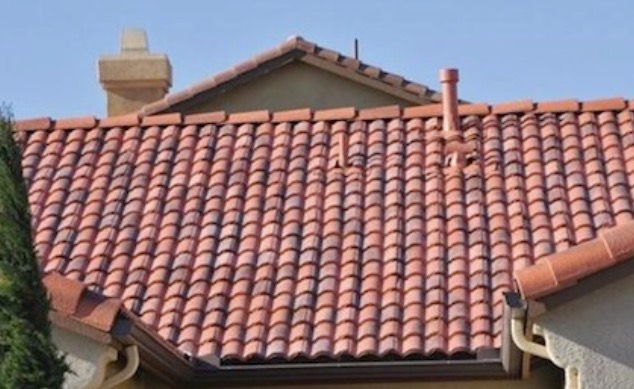
When signing a contract for a commercial lease space, you should examine the lease carefully to ensure the terms are and will be acceptable by both parties moving forward. There are aspects of a lease that can differ and sometimes negotiatable, to provide a quality workspace for your company.
The photo was taken during an inspection of new construction in the area. The tiles are a high profile interlocking type. No missing tiles were spotted and there were no signs of roof leak at the time of the inspection.
I used the “S” style clay tile img as my research material. Proper instillation of these tile will include a horizontal overlap with with manufacturer approved fastener n the upper left of the tile, and a vertical overlap of each of the rows.


